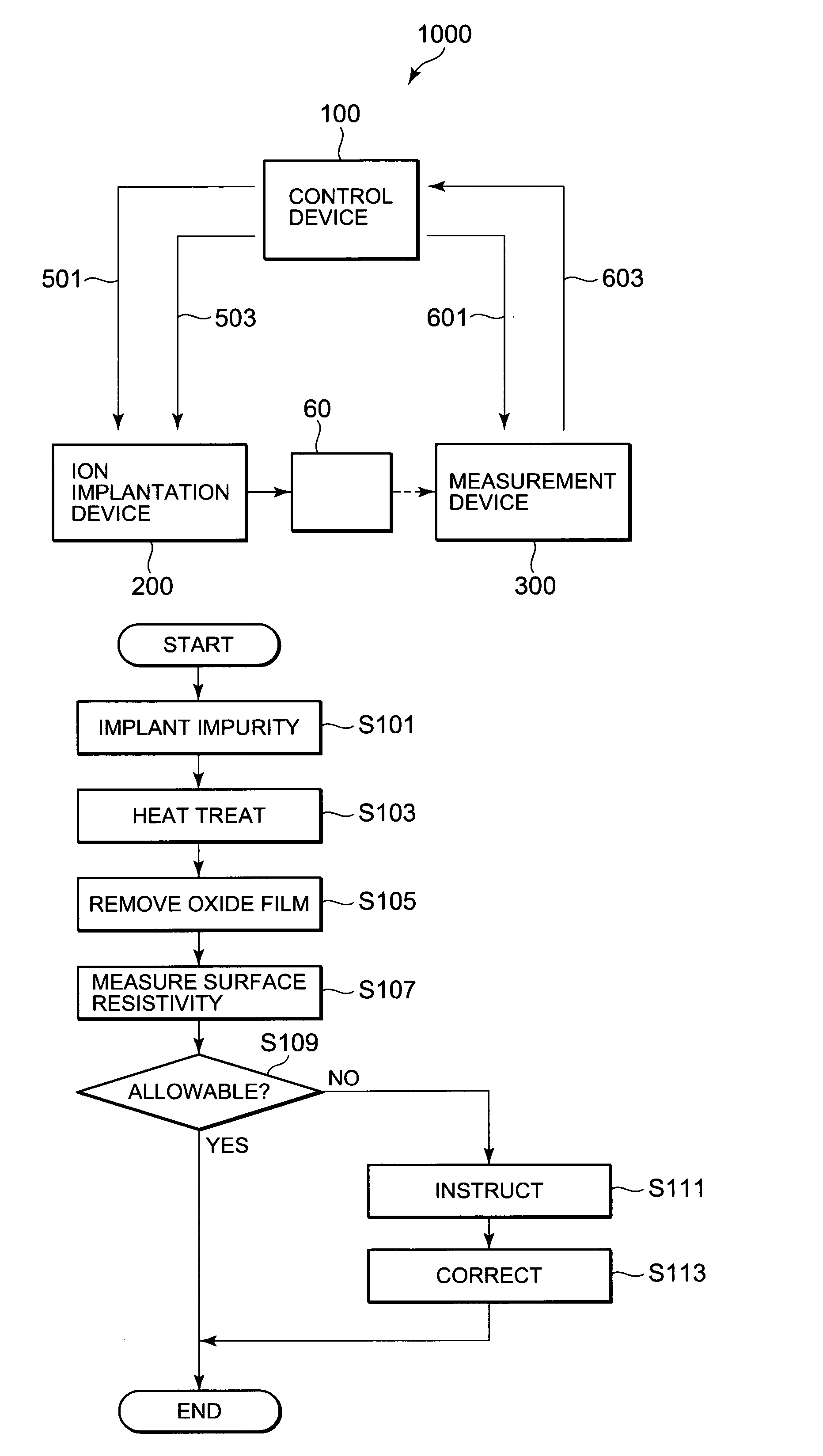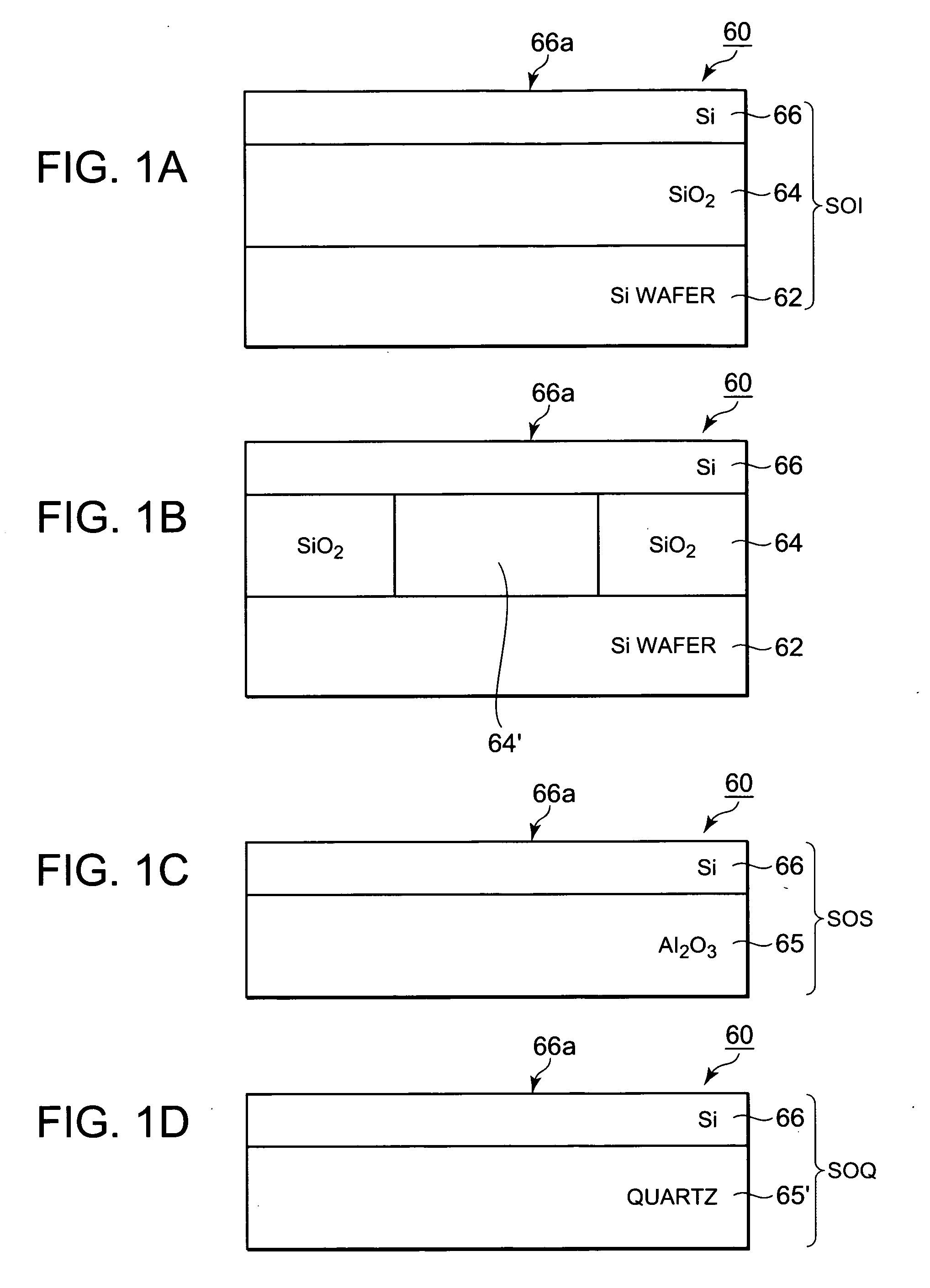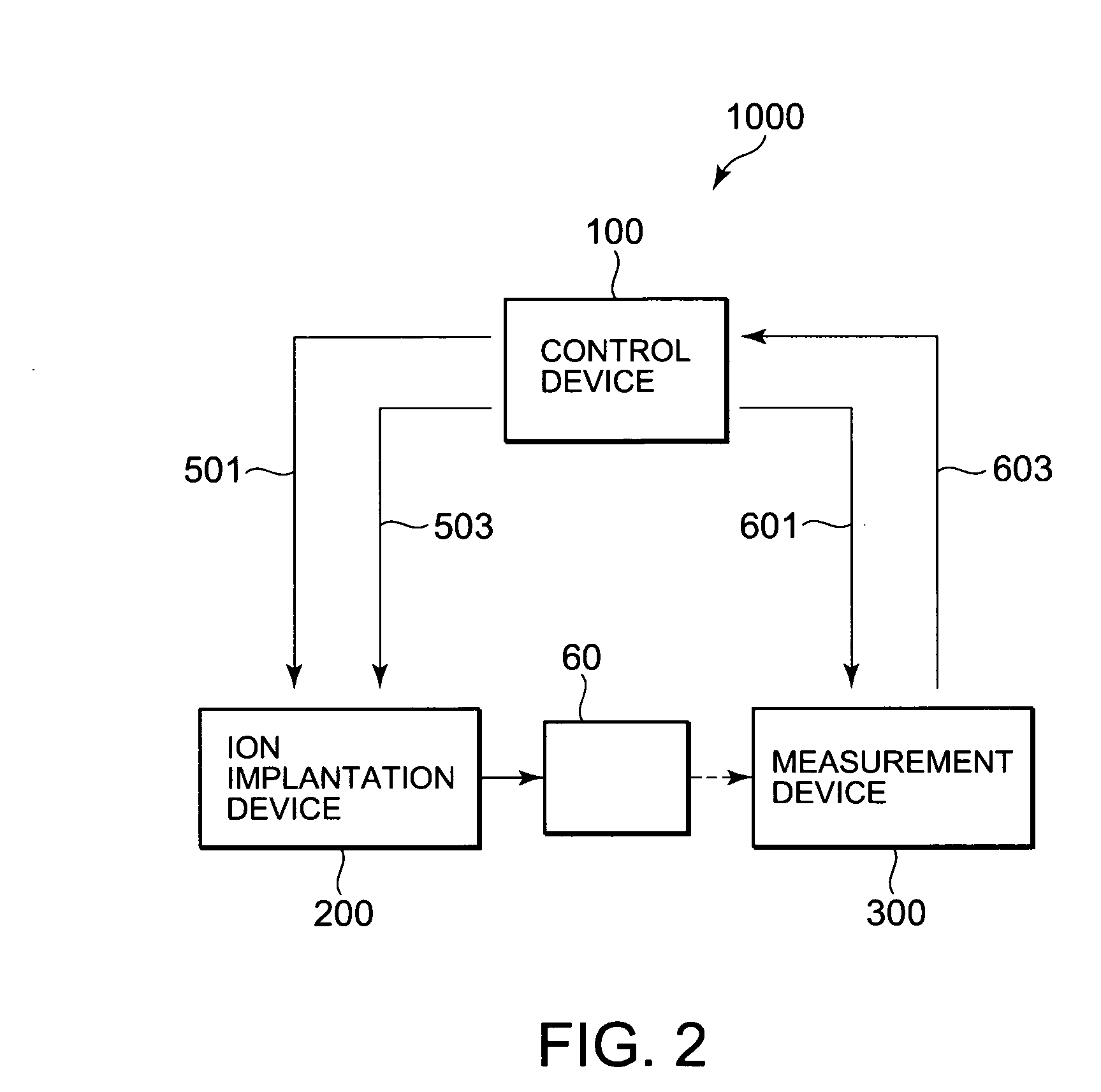Method for monitoring implantation depth of impurity
a technology of impurity implantation and depth, which is applied in the direction of individual semiconductor device testing, semiconductor/solid-state device testing/measurement, instruments, etc., can solve the problem that the implantation depth of the impurity b>70/b> cannot be monitored satisfactorily so far, and the present method is not capable of accurately detecting the variation in the implantation depth of the impurity, etc. problem, to achieve the effect of enhancing the efficiency of semiconductor device manufacturing
- Summary
- Abstract
- Description
- Claims
- Application Information
AI Technical Summary
Benefits of technology
Problems solved by technology
Method used
Image
Examples
first preferred embodiment
[0114] Respective preferred embodiments of the present invention will be explained below. In the respective embodiments, an SOI wafer is used as a measuring wafer 60, and phosphorus (P) is used as an impurity 70.
[0115]FIG. 7 is a view for describing a processing process according to a first embodiment. In order to explain the measuring wafer 60 employed in the first embodiment and the conventionally used measuring wafer 10 by comparison in FIG. 7, the measuring wafer employed in the first embodiment is referred to as “SOI wafer 60”, and the conventionally used measuring wafer is referred to as “bulk Si wafer 10”.
[0116] The first embodiment will be explained below with reference to FIG. 7A. The ion implantation device 200 first accelerates the impurity 70 at injection energy E set such that the impurity 70 is implanted to a set value RP of an implantation depth and injects the impurity 70 into the SOI wafer 60 from above a second oxide film 68. Incidentally, the injection energy E ...
second preferred embodiment
[0126]FIG. 8 is a view for describing a processing process according to a second embodiment. In the second embodiment, injection energy E is set higher than the first embodiment. Correspondingly, the thickness of a second oxide film 68 is formed thicker than the first embodiment. Incidentally, the thickness of the second oxide film 68 is set to such a thickness as not only to suppress outward diffusion of an impurity 70 but also to enable cutting of a base area of a concentration profile of the impurity 70.
[0127] The second embodiment will be explained below with reference to FIG. 8A. The ion implantation device 200 first accelerates the impurity 70 at injection energy E set such that the impurity 70 is implanted to a set value RP of its implantation depth and implants the impurity 70 in its corresponding SOI wafer 60 from above a second oxide film 68. Incidentally, the injection energy E is set in consideration of the thickness of the second oxide film 68 formed on its correspondi...
third preferred embodiment
[0136]FIG. 9 is a view for describing a processing process according to a third embodiment. In the third embodiment, a TEG pattern (Test Element Group pattern) for measuring a concentration peak depth Rp of an impurity 70 is formed on an SOI wafer 60 with the impurity 70 injected therein.
[0137]FIG. 9A shows the SOI wafer 60 subsequent to being subjected to the process (i.e., the oxide film removing process of S105) described with reference to FIGS. 7C and 8C.
[0138] The ion implantation device 200 effects photolithography processing and etching processing on an SOI layer 66 to form a TEG pattern 82. Thus, the ion implantation device 200 forms the TEG pattern 82 on a main surface of the SOI wafer 60 by using the SOI layer 66 (see FIG. 9B).
[0139] Next, the ion implantation device 200 forms an interlayer insulating film 84 and thereafter forms contacts 86 and wirings 88 on the TEG pattern 82. Thus, the TEG pattern 82 is made electrically conductive to the wirings 88 (see FIG. 9C).
[0...
PUM
 Login to View More
Login to View More Abstract
Description
Claims
Application Information
 Login to View More
Login to View More - R&D
- Intellectual Property
- Life Sciences
- Materials
- Tech Scout
- Unparalleled Data Quality
- Higher Quality Content
- 60% Fewer Hallucinations
Browse by: Latest US Patents, China's latest patents, Technical Efficacy Thesaurus, Application Domain, Technology Topic, Popular Technical Reports.
© 2025 PatSnap. All rights reserved.Legal|Privacy policy|Modern Slavery Act Transparency Statement|Sitemap|About US| Contact US: help@patsnap.com



